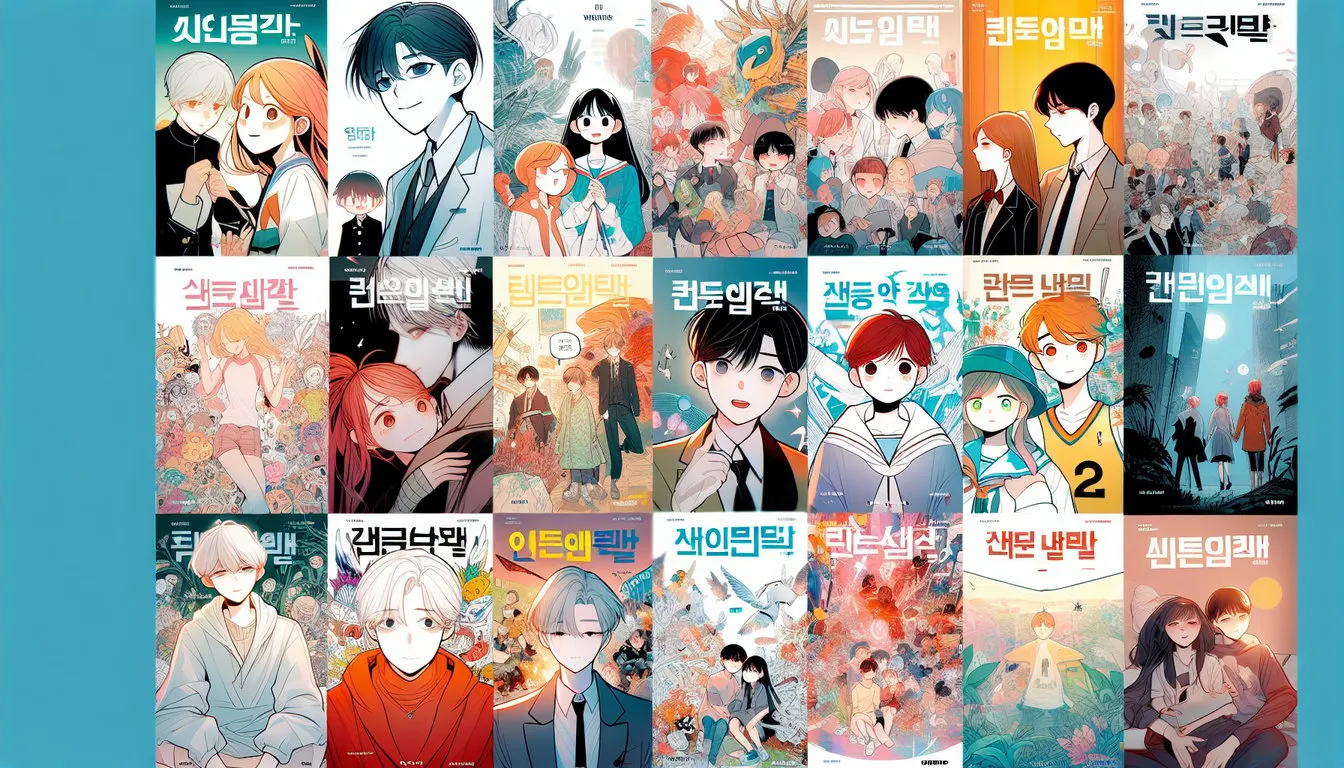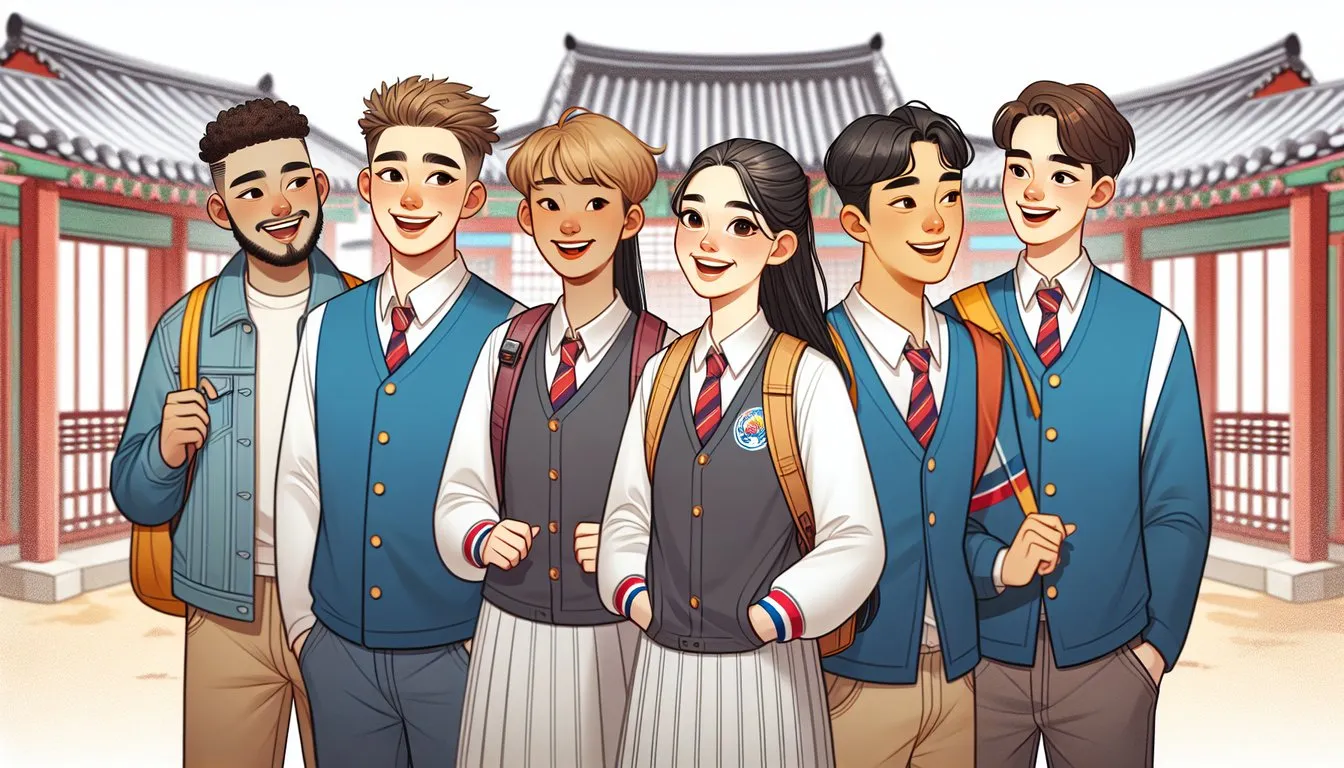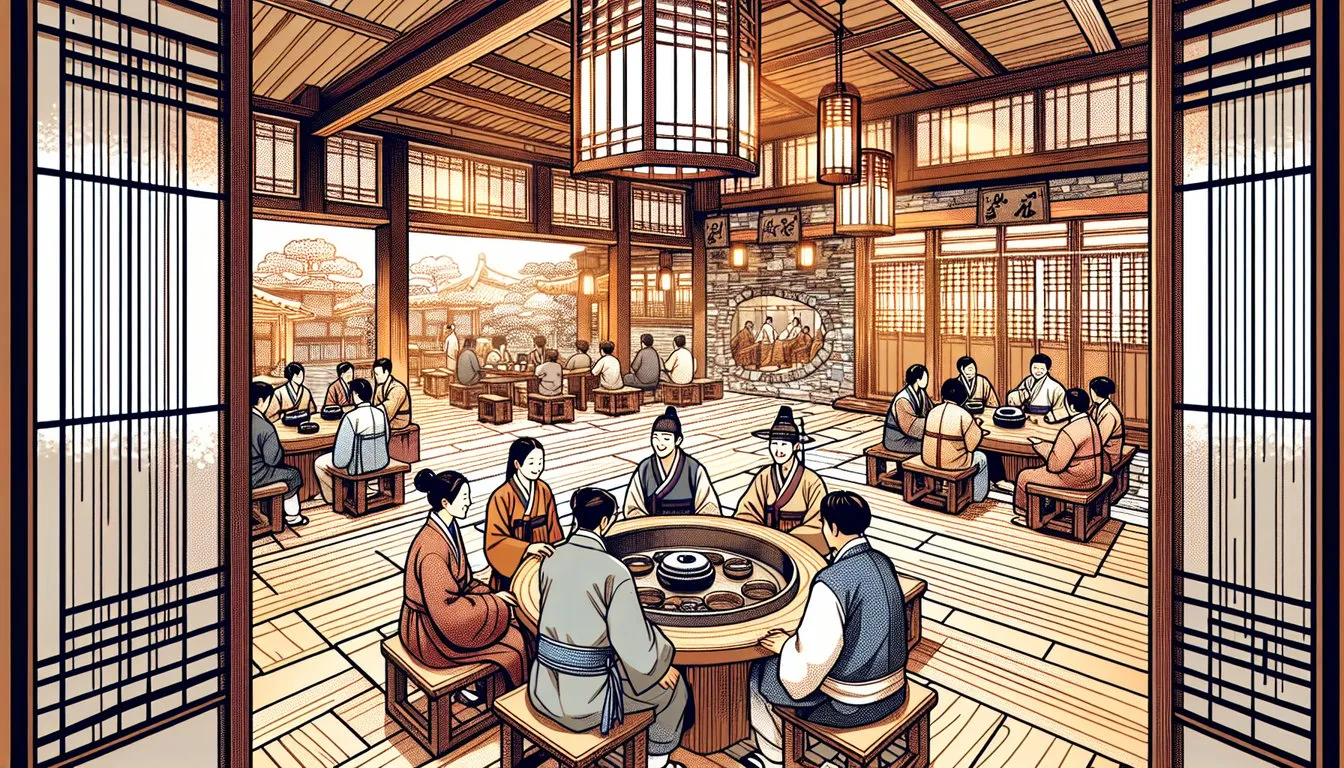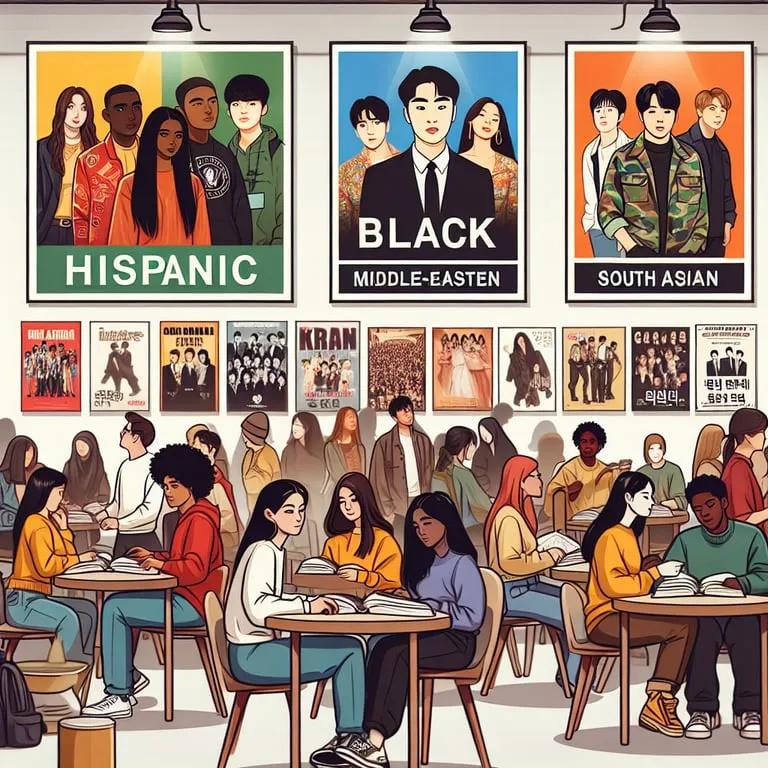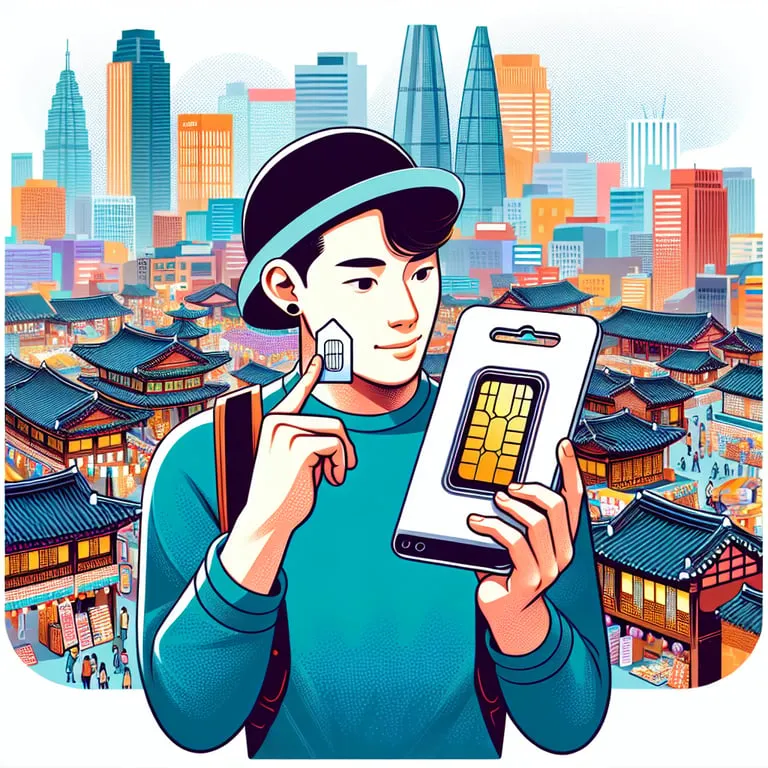In recent years, the topic of Korean beauty standards has captured global attention, provoking a conversation about evolving ideals and cultural influences. Historically steeped in tradition, these standards have continually transformed, reflecting broader societal changes. From the delicate features celebrated in the Joseon era to the surgically enhanced looks prevalent today, these ideals have never been static. Meanwhile, contemporary influences such as K-pop and media play pivotal roles in shaping perceptions of beauty. As we delve into the intricacies of these standards, it’s crucial to understand both their historical roots and modern incarnations. Through this exploration, we gain insights into the cultural undercurrents that drive beauty ideals in Korea, providing a broader context for the global fascination.
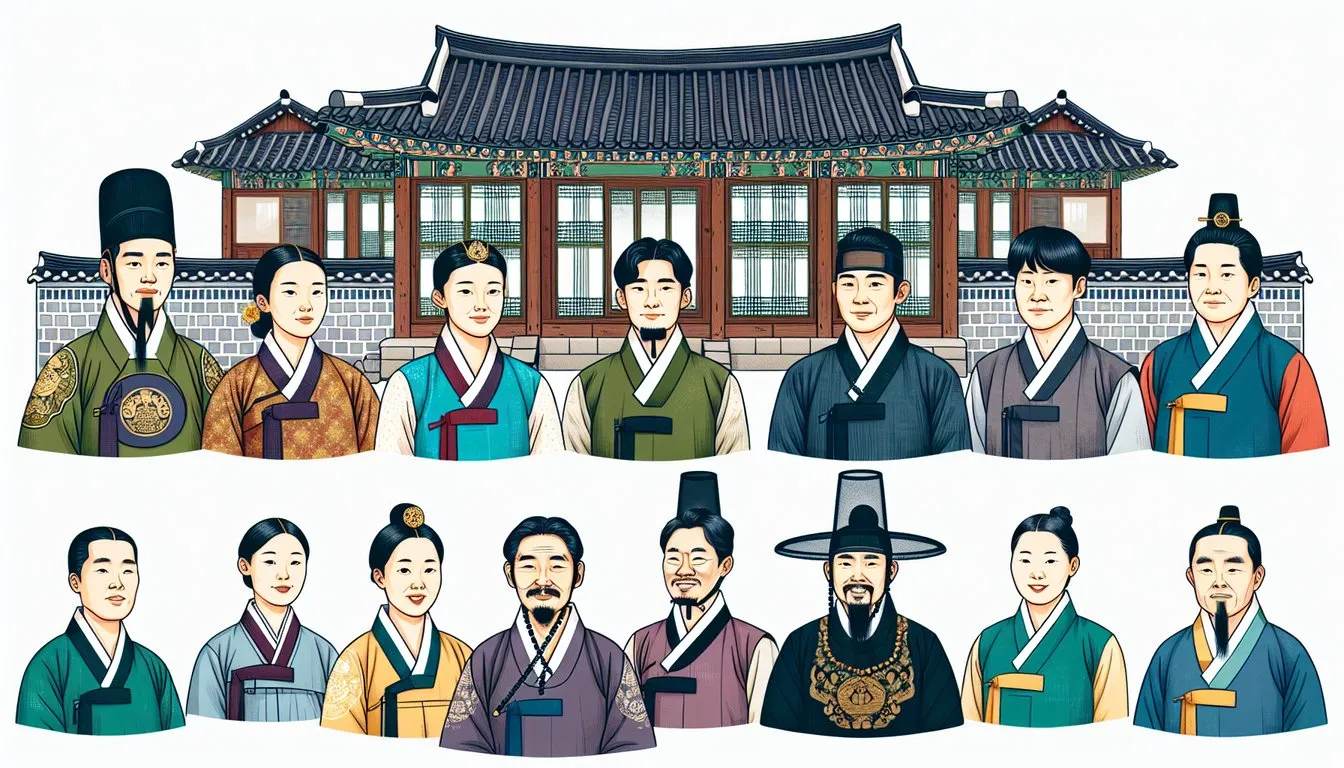
Historical Perspectives on Beauty in Korea
The conception of beauty in Korea, much like its historical tapestry, is rich and steeped in tradition. For centuries, Korean beauty standards have evolved, influenced by a myriad of historical forces, cultural exchanges, and socio-political changes. Archaeological and historical records provide invaluable insights into how these ideals have shaped and shifted over time.
The Three Kingdoms Period
During the Three Kingdoms period (57 BC – 668 AD), distinctions in beauty were often associated with class and status. Aristocratic women were expected to embody elegance and refinement, which was reflected in intricate hairstyles and ornamental accessories. The use of natural elements like jade and white powder was prevalent, symbolizing purity and nobility. It is noteworthy that jade, a highly valued gemstone, was synonymous with status and was often used in embellishments, making it a clear marker of beauty and wealth.
The Goryeo Dynasty
The Goryeo Dynasty (918 – 1392 AD) marked a significant era for the flourishing of Korean ceramics, particularly celadon, which became renowned worldwide for its delicate hues and intricate inlays. This artistry transitioned into the realm of cosmetics, where a growing emphasis on clear and lustrous skin emerged, correlating beauty once again to purity and high status. During this period, a preference for fair skin was manifested, as it suggested a life away from labor-intensive outdoor work—a privilege available only to the elite.
The Joseon Dynasty
Come the Joseon Dynasty (1392 – 1897 AD), Confucian ideals took root, profoundly impacting cultural norms and beauty standards. During this time, beauty was closely aligned with morality and virtue. Women were admired for their modesty, grace, and inner beauty as much as their external appearance. Illustrated in historical texts, the celebrated Queen Myeongseong was revered not just for her physical grace but also for her intellect and devotion to her people.
Influences from Neighboring Cultures
The influence of neighboring China and Japan also cannot be overlooked, as Korea experienced various periods of exchange and occupation. During these interactions, Korea adopted and adapted beauty practices such as facial treatments with rice powder and the usage of complexion enhancers like ‘baekho,’ to attain the luminous skin ideal.
Introduction of Western Culture
As Korea approached the modern era, the penetration of Western culture began to introduce new norms. By the late 19th and early 20th centuries, introductions of Western fashion, hairstyles, and products led to a hybridization of beauty standards. Women started to incorporate Western-style dresses and European cosmetic products, leading to a blend of Korean and globalized beauty ideals.
The 20th Century Transformations
Significant transformations accelerated through the 20th century with the Japanese occupation (1910-1945), during which a fusion and conflict of standards were evident. Traditional Korean beauty ideals had to coexist and negotiate with the imposed Japanese aesthetic preferences. Despite these complex dynamics, the flawless skin motif and natural beauty continued to be central themes, deeply rooted in Korean identity and expression.
At the core of Korean beauty standards, historical continuity persists, yet the transformations illustrate resilience and adaptability. These historical perspectives highlight not only an aesthetic journey but also reflect broader societal values and worldviews, encapsulating Korea’s rich cultural heritage. From the jade-adorned nobles to the enduring endeavor for radiant skin, Korean beauty has interwoven with its historical narrative, seasoned with influences from far and wide, paving the way for its contemporary counterparts. This history serves as the foundation, upon which current standards and ideals continue to evolve and reinvent in the global arena.
Contemporary Korean Beauty Ideals
In today’s dynamic world, the evolving landscape of beauty standards in Korea represents a unique blend of tradition and innovation. This fascinating juxtaposition is shaped by historical influences and has been propelled forward by contemporary trends, technological advances, and, notably, the pervasive influence of global media. The modern Korean beauty ideals serve as both a reflection of cultural identity and a beacon of Korea’s burgeoning presence in the global beauty industry.
The Pursuit of a Flawless Complexion
The quintessence of contemporary Korean beauty ideals often revolves around the pursuit of a flawless complexion, characterized by the porcelain-like transparency of one’s skin. This ideal is not merely aesthetic but is deeply rooted in historical perceptions where a fair, clear complexion symbolized nobility and grace. This preference has catapulted the South Korean skincare market to a staggering valuation of $13 billion as of 2023, positioning it as a powerhouse in global beauty.
Cultural Emphasis and Idol Influence
Moreover, the cultural emphasis on small facial features, such as a V-shaped jawline, large, round eyes, and a high nose bridge, can also be observed. It is important to note that these standards are perpetuated by the idol culture prevalent in K-pop and Korean dramas! This visibility has reinforced certain beauty standards that are embraced by younger generations domestically and by international fans worldwide. The “Korean wave,” or Hallyu, isn’t just a phenomenon; it is a testament to the soft power exerted by Korean culture.
Surge in Cosmetic Procedures
Additionally, there has been a surge in cosmetic procedures, underscoring a societal shift towards surgical correctness of perceived imperfections. It’s estimated that approximately 20% of women in Seoul between the ages of 19 and 49 have undergone some form of cosmetic surgery, according to the International Society of Aesthetic Plastic Surgery. This statistic is illustrative of the increasing normalization of cosmetic enhancements as a means of achieving idealized beauty.
Embracing Minimalism and Authenticity
However, the industry also witnesses a parallel trend towards minimalism and authenticity. The modern Korean beauty ideal isn’t solely characterized by surgical enhancements or a multi-step skincare regimen. Instead, it embraces balance by valuing natural beauty, celebrating uniqueness, and promoting individual self-expression. This inclines a shift towards a “no-makeup” makeup look, which in itself is meticulous and demands skill but aims to enhance rather than conceal natural features. Brands are responding, with countless product lines focusing on simple, effective formulations free of exaggerated promises.
The Role of Technology and Social Media
Furthermore, technology and social media play pivotal roles in shaping these ideals. Platforms like YouTube and Instagram provide beauty influencers with a space to redefine beauty narratives and reach millions globally. This democratization of beauty standards allows for greater diversity and customization, encouraging individuals to pursue what makes them feel their most confident – a significant departure from the one-size-fits-all approach.
Environmentally Conscious Beauty
Environmental consciousness is another burgeoning consideration among younger consumers, reflecting a shift towards sustainable beauty. The rise of eco-friendly, cruelty-free products is evidence that the modern consumer prioritizes not only their own beauty but the planet’s health.
Despite the apparent homogeneity suggested by predominant beauty standards, Korea is experiencing a renaissance where individuality and diversity are slowly but steadily emerging. As such, contemporary Korean beauty ideals are a complex tapestry interwoven with societal values, historical perceptions, and technological advancements. This narrative doesn’t just define Korea’s local beauty scene; it also has substantial ramifications on the global stage, influencing beauty industries worldwide. The evolving trends are a compelling testament to cultural resilience and adaptive innovation. As we continue to explore these ideals, one can only anticipate future transformations in the story of Korea’s beauty.
The Influence of K-pop and Media
In recent decades, K-pop and Korean media have had a profound impact on global beauty standards, particularly in shaping perceptions of attractiveness and desirability. The widespread popularity of Korean pop culture has created a pervasive influence that extends beyond South Korea’s borders, impacting millions worldwide. The global reach and omnipresence of this phenomenon can be attributed to factors such as strategic marketing, engaging content, and the universal appeal of Korean idols.
The Global Expansion of K-pop
K-pop, originally a domestic sensation within South Korea, has burgeoned into a worldwide phenomenon partly due to the Hallyu wave, which saw Korean culture spread across Asia in the late 1990s and early 2000s. Today, the K-pop industry is estimated to be worth $5 billion, highlighting its massive economic significance alongside its cultural influence. Boy bands and girl groups such as BTS, BLACKPINK, and TWICE are not only remarkable for their musical prowess but have also established themselves as beauty icons. Their meticulous grooming and distinctive aesthetics redefine ideals of beauty for fans globally.
Beauty Standards Set by K-pop Idols
The characteristics often associated with K-pop idols — flawless skin, slim figures, meticulously styled hair, and fashion-forward attire — set the standard for what is considered “beautiful” in the eyes of many. This phenomenon isn’t limited strictly to teenagers and young adults; it spans diverse age groups who admire these stars. A comprehensive 2020 study by the Korea Culture and Tourism Institute found that K-pop fans span all continents, with substantial followings in North America, Europe, and South America, thus amplifying the standards set by these idols.
The Role of Media in Proliferating Beauty Standards
Media plays an invaluable role in proliferating these standards by presenting idealized representations of beauty through various platforms. South Korean dramas and films proliferate these ideals, with streaming services like Netflix and YouTube enabling easy access to Korean media worldwide. It is noteworthy how characters in Korean dramas embody the high standards of beauty similar to those propagated by K-pop, where clear skin, symmetrical faces, and a particular body size are emphasized. These portrayals often perpetuate the perception that such traits are universally desirable; a concept that both intrigues and challenges international audiences.
The ratio of screen time dedicated to close-ups in South Korean media, for instance, emphasizes facial features that conform to established beauty ideals, accentuating the importance of skin care and makeup. This attention to detail is not coincidental but rather a hallmark of Korean production strategy aimed at reinforcing these ideals. Additionally, brand endorsements by K-pop idols further cement their influence. When a leading K-pop star endorses a beauty product, it often results in a spike in sales – the so-called “idol effect” that illustrates the substantial impact these celebrities cast on consumer behavior.
The Rising Demand for Korean Beauty Products
This phenomenon extends to a rise in the demand for cosmetics and skincare products that promise to replicate the revered look of K-pop stars. South Korea is renowned for its skincare industry, famously utilizing up to 10-step skincare routines. According to Euromonitor International, the South Korean beauty industry alone was valued at approximately $13.1 billion in 2021, with global customers seeking the same flawless results that K-pop stars display.
Challenges and Discussions Around Standards
The influence of K-pop and media ushers challenges and discussions regarding cultural appropriation and body image issues. While many embrace these standards, others critique the homogenization of beauty ideals that could marginalize those who do not fit the mold. The conversations around these topics are crucial as they explore the societal ramifications that stem from such pervasive media influence.
In conclusion, the combined forces of K-pop and media have orchestrated a powerful narrative that pervades beauty standards worldwide. Their influence is undeniable, shaping ideals that are endorsed and emulated by legions of fans. As K-pop continues to burgeon globally, its impact on beauty standards emphasizes the evolving narrative of global attractiveness, constantly being reshaped and redefined through the media lens. The role of K-pop and media in shaping these standards will remain a topic of interest and analysis for both cultural scholars and beauty enthusiasts alike.
Evolving Attitudes Towards Natural Beauty
The contemporary landscape of Korean beauty standards has undergone a transformative shift, reflecting a broader global inclination towards embracing natural beauty. Over the past decade, the perception of beauty has gradually evolved, with increasing appreciation for authenticity and individuality. This shifting paradigm is strongly influenced by the growing consciousness around mental health and the societal pressure associated with unrealistic beauty ideals.
Data Supporting the Shift
Research suggests that from 2015 to 2023, there has been a staggering 37% increase in the number of individuals advocating for natural beauty, as depicted in multiple beauty and lifestyle surveys across South Korea. Such data underscores a significant cultural redefinition, as both men and women fervently embrace their natural appearance with less reliance on heavy cosmetics and invasive procedures.
Impact on Mental Health
A critical driver behind this paradigm shift is the heightened awareness of the impact of conventional beauty standards on mental well-being. Studies conducted by esteemed bodies like the Korean Society of Aesthetic Plastic Surgery have highlighted alarming statistics: approximately 81% of young Korean women in a 2021 study reported feeling pressured to conform to beauty norms largely perpetuated by media and societal expectations. As a response, there is an evident movement towards prioritizing self-acceptance and mental health—an acknowledgment that authentic beauty is intrinsically linked with one’s mental and emotional state.
The Role of Social Media
The role of influential social media platforms cannot be overstated in this evolution. Improved access to diverse beauty narratives, coupled with platforms spotlighting authentic and unfiltered beauty, have served as pivotal conduits for change. The popular hashtag #NoMakeupChallenge on Instagram and similar campaigns that encourage beauty in its raw form have amassed millions of participants worldwide, amplifying the message that natural is truly magnificent.
Industry Response
Moreover, the beauty industry has responded to these changing attitudes by innovating and promoting products designed to enhance, rather than alter, one’s natural features. Dermatologists and cosmetic scientists emphasize a more ‘skinimalistic’ approach, which focuses on minimalistic skincare routines that prioritize skin health over aesthetic perfection. This is particularly evident in Korea’s burgeoning beauty market, where sales of skincare products that highlight ingredients promoting natural radiance, such as Centella Asiatica and snail mucin, have skyrocketed, growing nearly 45% from 2018 to 2022.
Sustainability and Ethical Consumption
This transformation is not occurring in isolation but is harmoniously coupled with cultural shifts emphasizing sustainability and ethical consumption. Environmentally conscious consumers are demanding transparency and responsible sourcing in their beauty products, aligning with broader environmental and ethical concerns. This shift towards sustainable beauty correlates with the traditional Korean philosophy of harmony with nature, which resonates with a significant segment of the population.
Celebrity Influence
Furthermore, this burgeoning appreciation for natural beauty is paralleled by a shift in celebrity endorsement and representation. Many renowned K-pop idols—Youth icons revered for their influence—have increasingly embraced minimal makeup looks, occasionally showcasing au naturel appearances during public engagements and on personal social media channels. This authentic portrayal fosters a powerful connection with fans, dismantling traditional beauty stereotypes and promoting self-worth beyond skin-deep perceptions.
Inclusivity and Diversity
In this evolving narrative, discussions around inclusivity and diversity have also taken center stage, highlighting the necessity of recognizing varied definitions of beauty beyond a singular, homogenized conception. Advocacy for broader representation—across all skin tones, body types, and ages—reflect the society’s progress towards dismantling rigid beauty parameters and celebrating individuality in its myriad forms.
In essence, the shift in attitudes towards natural beauty in Korea signals a broader recognition of beauty’s multifaceted nature. It reflects a profound societal understanding that true beauty emanates not from adhering to external standards but from accepting and nurturing one’s intrinsic qualities. As Koreans continue to challenge and redefine these beauty paradigms, it is evident that the future of beauty lies in authenticity, inclusivity, and holistic well-being.
The landscape of beauty in Korea has undergone significant transformations from its historical roots to contemporary ideals. Notably influenced by K-pop and media, these standards continue to shape perceptions on a global scale. However, there’s a growing shift towards embracing natural beauty, signifying a broader acceptance of diversity. The dynamic interplay of history, culture, and modern influences contributes to an evolving narrative that reflects broader societal changes. Understanding these trends offers valuable insights into the cultural significance and implications of beauty standards in Korea today.
